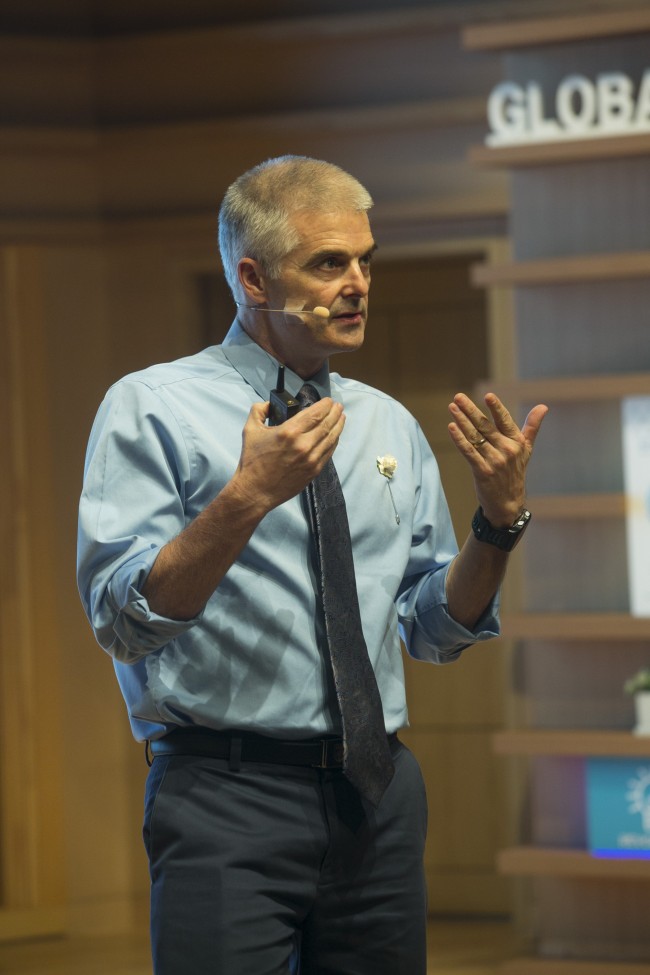 |
| U.S. educator Jon Bergmann speaks Thursday during the Global Education Forum 2015, hosted by Daekyo Culture Foundation at Daekyo Tower in Gwanak-gu, southwestern Seoul. (Global Education Forum 2015) |
Education will need to take a far different approach from the “factory model of teaching” of the past to grant students greater control over their learning, a U.S. educator has said.
“What matters to me is how to deliver information to this ‘YouTube generation.’ How can we reach them and teach them the way that connects with them?” Jon Bergmann, one of the developers of the “flipped classroom” model, said in a joint interview last week.
“Much of what we (teachers) have done for a long time has changed. Teachers need to reimagine what their classrooms should look like.”
Bergmann was in Seoul to attend the Global Education Forum 2015.
The flipped classroom is a strategy that reverses the traditional education model to deliver the instructional content ― often in forms of online video lectures ― outside the classroom, partaking in activities in the classroom.
Bergmann said the model put students at the center of the learning process, allowing them to learn at their own pace, instead of being fed information by teachers.
“It has effects on (students’) learning behavior. Students who might have had trouble with the traditional method can take ownership of their own learning, instead of waiting for teachers to give it to them.
The idea of an inverted learning model was initiated back when Bergmann was teaching high school chemistry in 2007. Bergmann and his colleague Aaron Sams had been recording lectures for students who missed classes when they started asking “what is the value of class time if you don’t have to go to the classroom to get information?”
Prerecording the lectures and letting students acquire information via videos in advance opens up opportunities for the educators to conduct various creative activities, such as projects and debates in the classroom, according to Bergmann.
“This is a way to get schools away from a factory level of teaching; making teachers more valuable than information assimilators,” he said.
One of the common perceptions about the flipped classroom is that it is primarily about students studying through lecture videos, which leads educators to focus on creating the video more than the class activities themselves.
Bergmann, however, said that flipped learning puts more emphasis on the relationship between students and teachers, as well as among students.
“The flipped classroom is not about the (lecture) videos, it’s about active engagements you can have in classrooms,” Bergmann said. “(Classes) are not taught by computers, they’re taught by teachers,” he said.
In Korea, the flipped classroom model has been practiced by some 250 schools since 2012. But there has been concern as to whether the new model can establish itself in Korean schools, where much learning is still based on rote memorization from lectures.
Bergmann said that while there is a lot of value in rote learning, teachers would need to find balance between rote learning and constructive learning.
Finding that balance is important in flipped learning, Bergmann pointed out, which is why the teachers’ role is more important than ever.
“To flip a class takes a lot of time. There are no right ways, but there are ways to flip it wrong,” he said. “We need to encourage the teachers. Flipped learning will not make your teaching life easier, but it will make your teaching better.”
By Yoon Min-sik
(minsikyoon@heraldcorp.com)

